Mark your calendar! Fire Prevention Week is October 3-9, 2021. This year’s theme, “Learn the Sounds of Fire Safety! ™”, focuses knowing the sounds that can save you, your family, and your home.
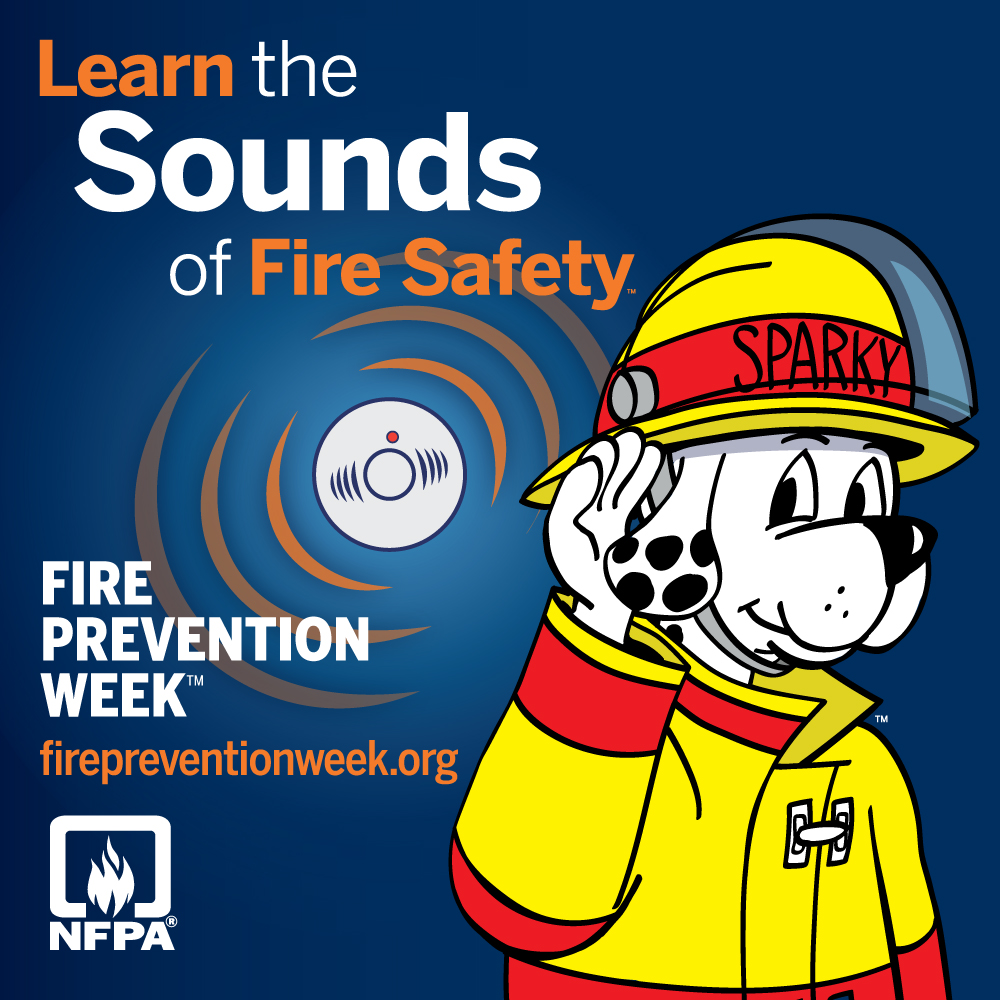
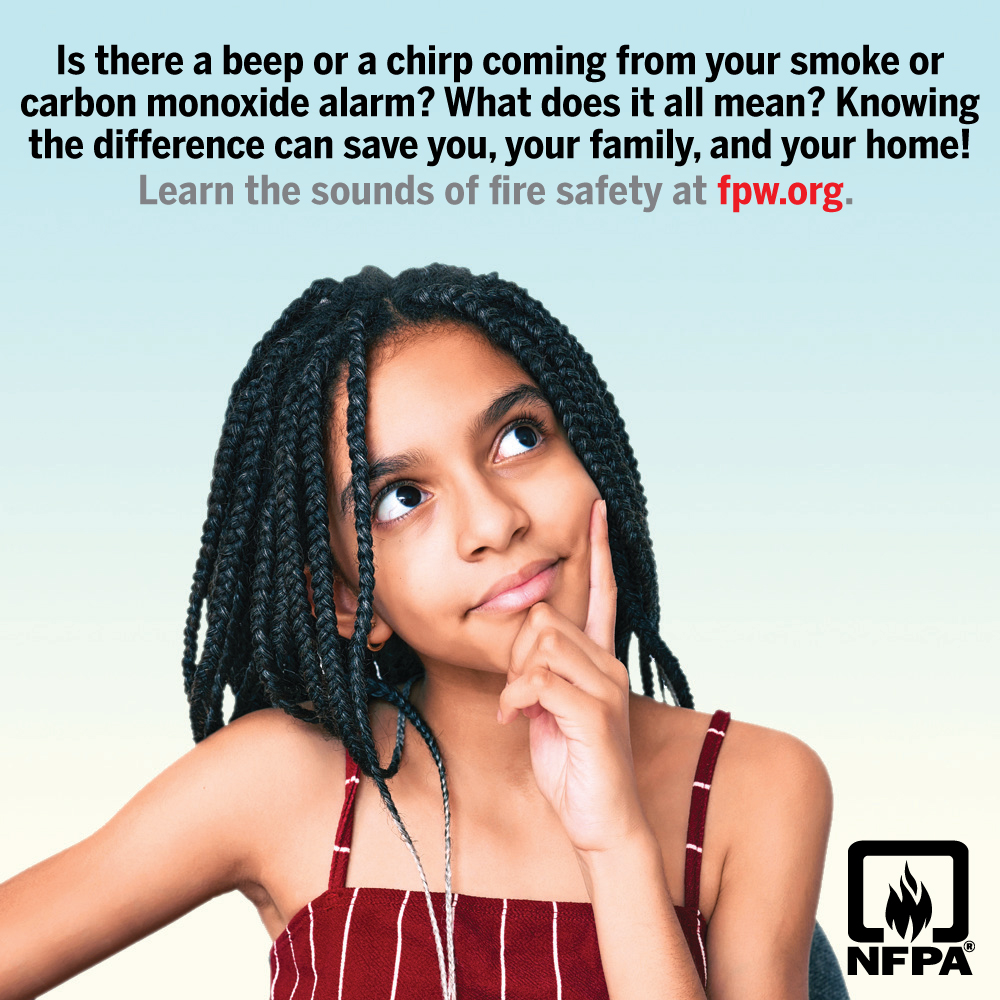
What is your alarm telling you?
SMOKE ALARMS
• A continued set of three loud beeps—beep, beep, beep—means smoke or fire. Get out, call 9-1-1, and stay out.
• A single “chirp” every 30 or 60 seconds means the battery is low and must be changed.
• All smoke alarms must be replaced after 10 years.
• Chirping that continues after the battery has been replaced means the alarm is at the end of its life and the unit must be replaced.
CARBON MONOXIDE (CO) ALARMS
• A continuous set of four loud beeps—beep, beep, beep, beep—means carbon monoxide is present in your home. Go outside, call 9-1-1 and stay out.
• A single chirp every 30 or 60 seconds means the battery is low and must be replaced.
• CO alarms also have “end of life” sounds that vary by manufacturer. This means it’s time to get a new CO alarm.
• Chirping that continues after the battery has been replaced means the alarm is at the end of its life and the unit must be replaced.
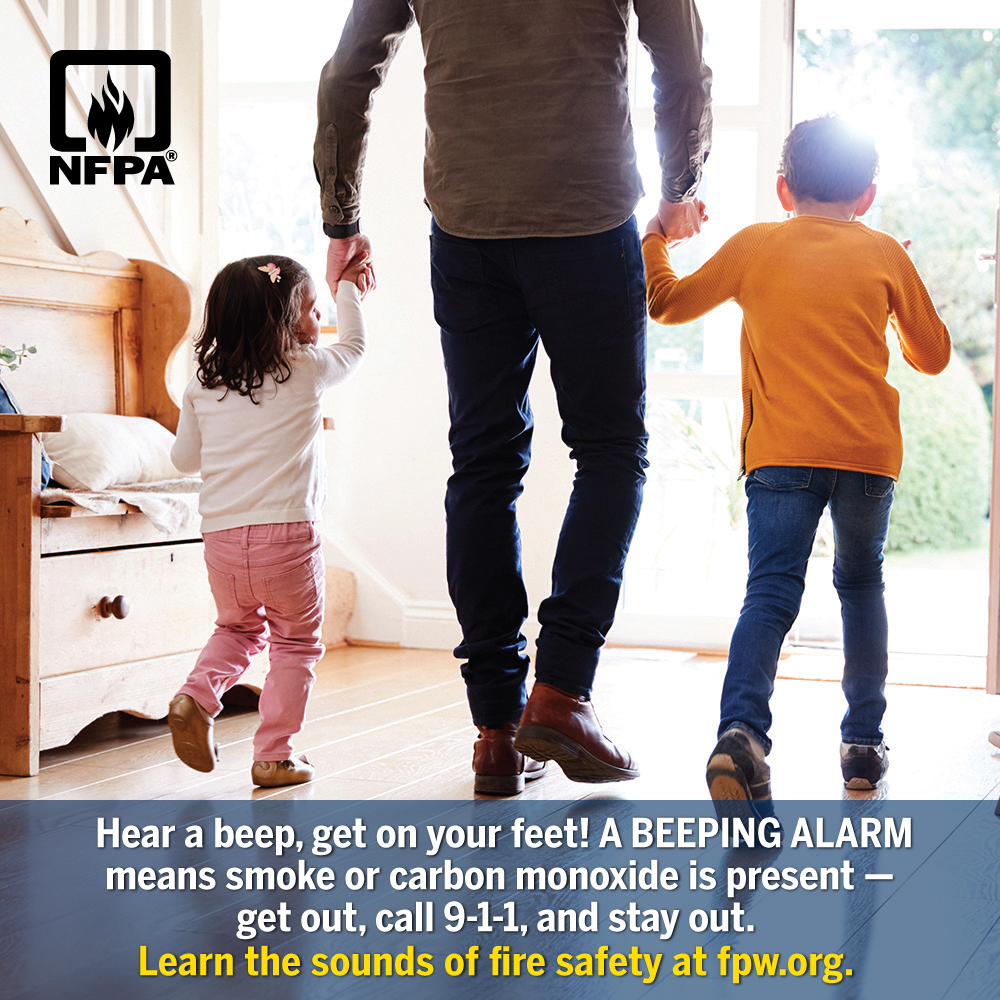
Hear the beep, get on your feet!
Download a fire escape plan grid.
Practice your escape plan with everyone in the family.
Make sure everyone knows where your family meeting place is out front.
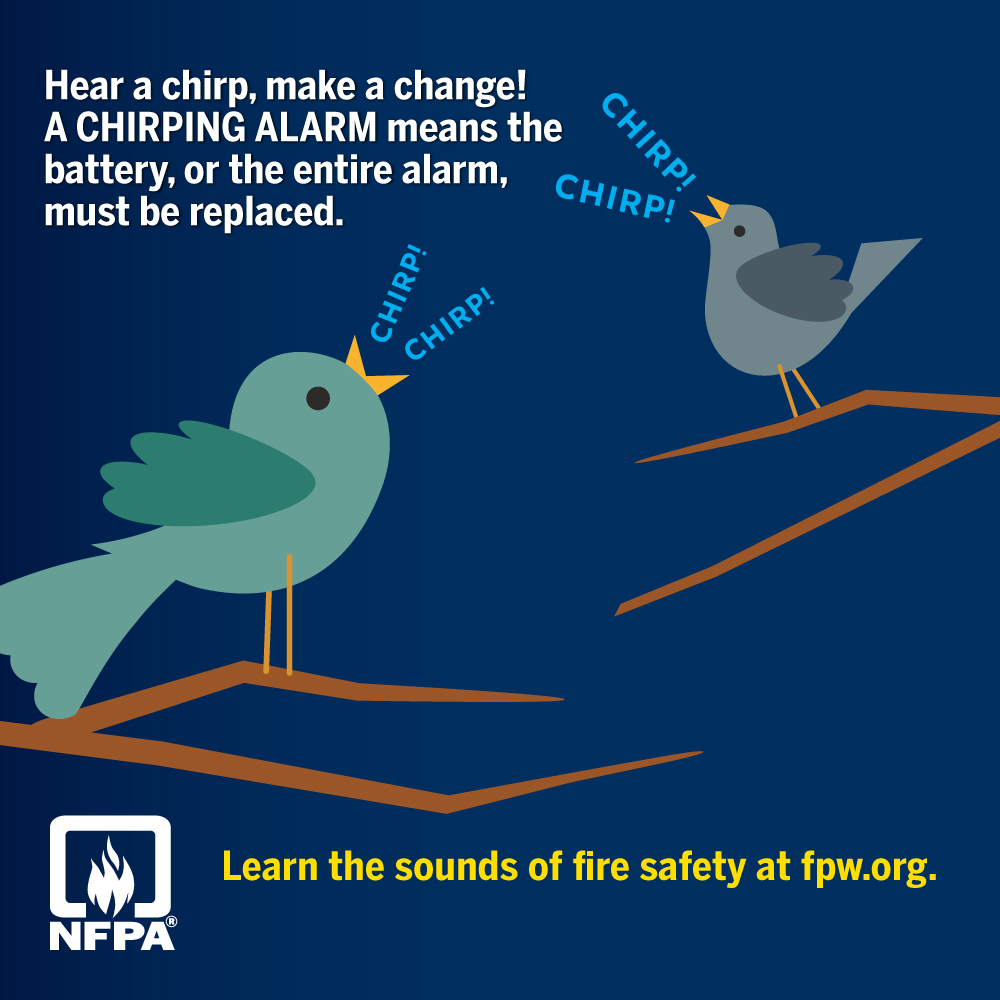
Hear a chirp? Make a change!
A chirping alarm needs attention. Replace the batteries or the entire unit if it is over 10 years old. If you are not sure how old it is, just replace it.
Low battery chirp
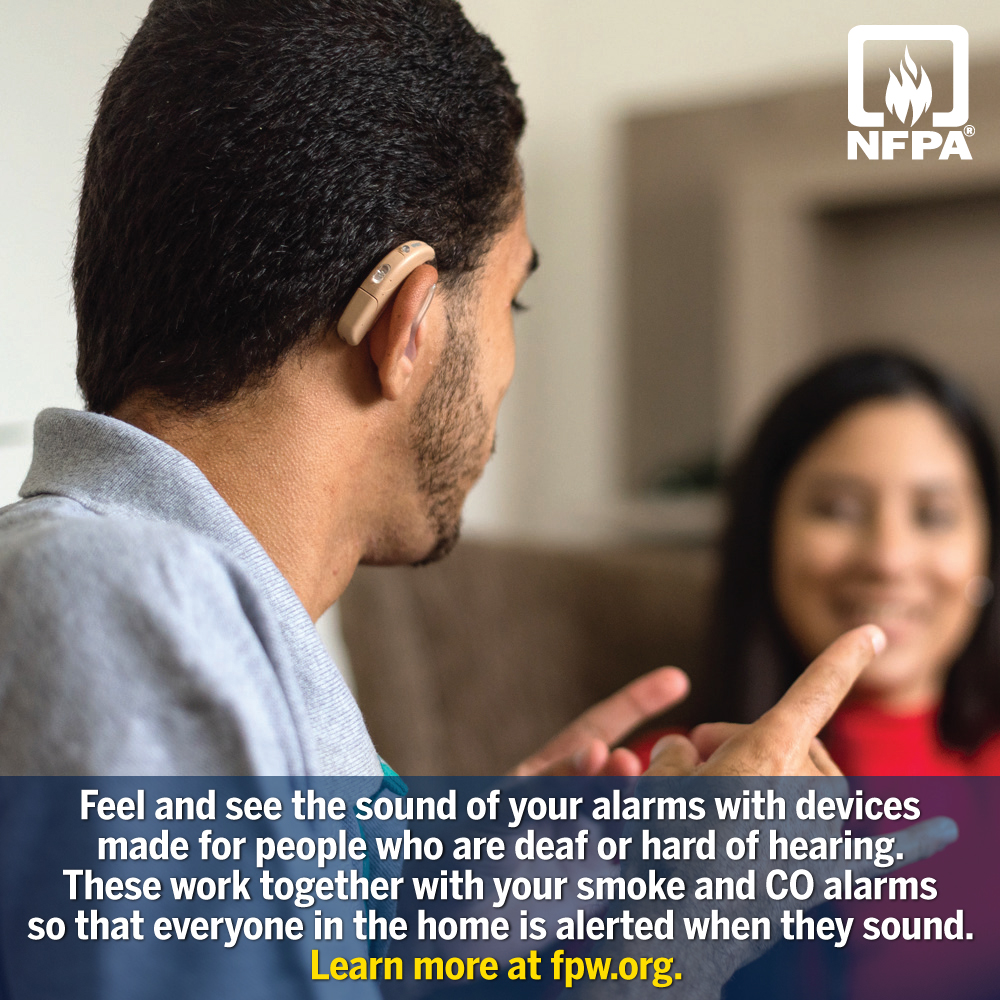
Feel and see it
Make sure your smoke and CO alarms meet the needs of everyone in your home, including those with sensory or physical disabilities.
Some tips:
✔ Install a bedside alert device that responds to the sound of the smoke and CO alarms. Use of a low frequency alarm can also wake a sleeping person with mild to severe hearing loss.
✔ Sleep with your mobility device, glasses, and phone close to your bed.
✔ Keep pathways like hallways lit with night lights and free from clutter to make sure everyone can get out safely.
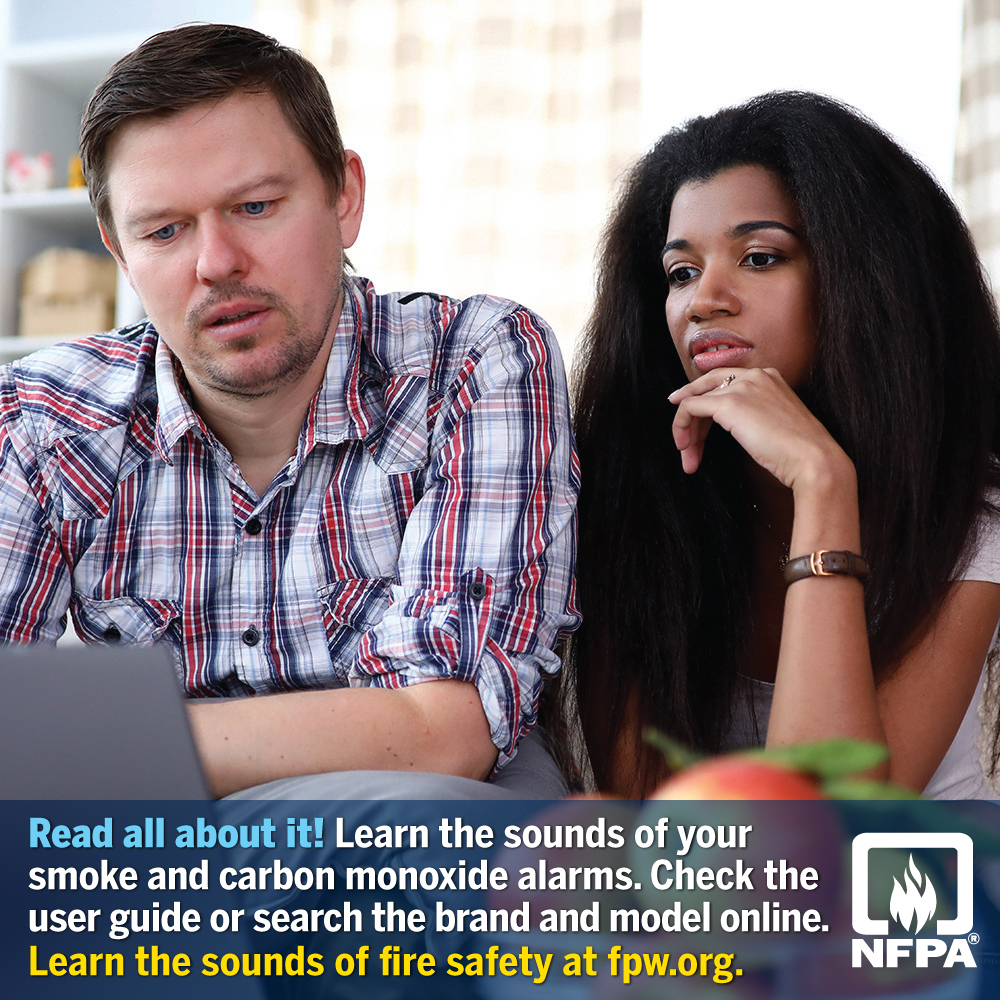
Smoke alarm beeps
Smoke alarm beeps with voice
Carbon monoxide alarm beeps
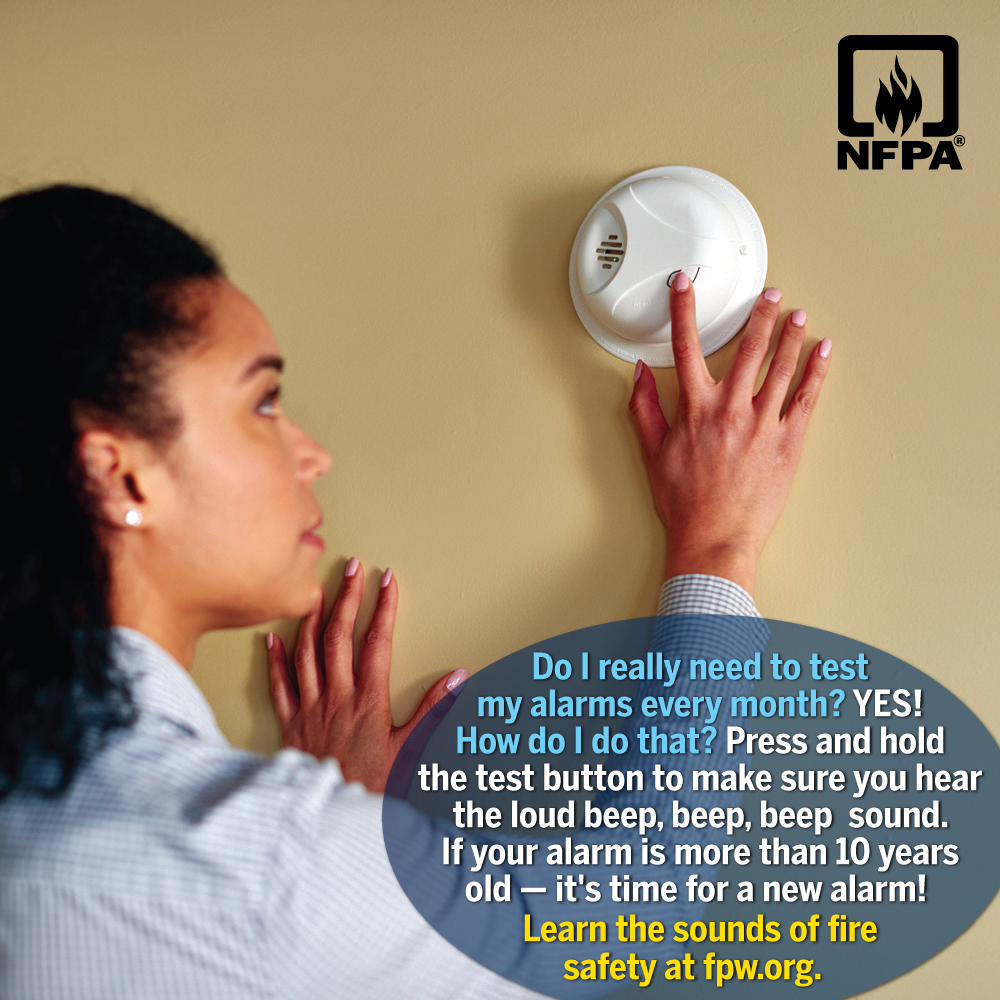
Is it working?
Smoke alarms save lives. Smoke alarms that are properly installed and maintained play a vital role in reducing fire deaths and injuries. If there is a fire in your home, smoke spreads fast and you have less the two minutes to escape. Smoke alarms alert you to give you time to get out.
Install smoke alarms in every sleeping room and outside each separate sleeping area. Install alarms on every level of the home.
Smoke alarms should be interconnected. When one sounds, they all sound.
Test your smoke alarms at least once a month. Press the test button to be sure the alarm is working.
